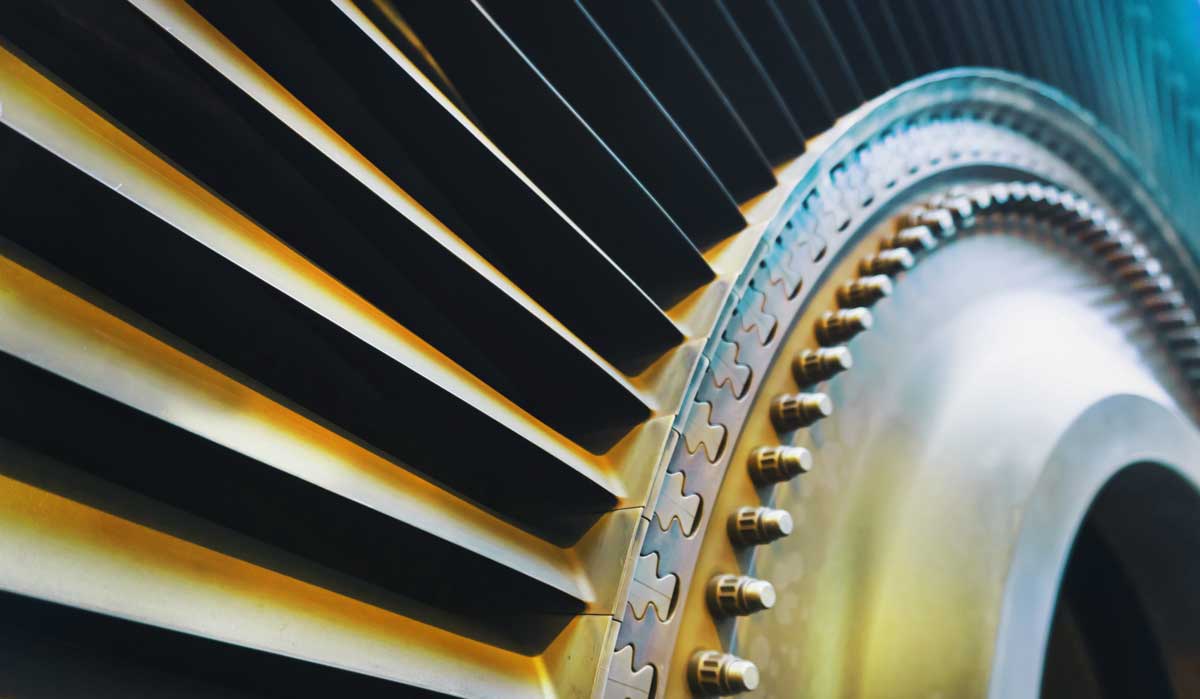Mass loading can cause inaccuracies when testing the vibration of some objects – especially if they are light-weight. Mass loading occurs when the mass of the measurement device changes the dynamics of the object being tested, such as a turbine blade. Polytec’s laser Doppler vibrometers are a solution to this problem, as they are precise and are a non-contact method of vibration measurement.
What is Mass Loading?
Mass loading is an issue that can occur in vibration testing because the addition of measurement devices, such as accelerometers, influences the behaviour of the test object. This is a particular problem when measuring lightweight, sensitive structures such as turbine blades. The extra weight, even of these small devices, can alter the natural frequencies of the object, leading to inaccurate test results. This issue is a serious concern in industries and academic subjects requiring precise vibration analysis, such as aerospace engineering and material science.
Laser Doppler Vibrometry
Polytec’s Laser Doppler vibrometers offer a groundbreaking approach to vibration measurement. Unlike traditional methods requiring physical contact with the test object, the vibrometer employs a laser to measure vibrations without adding mass. This non-contact method involves projecting a laser beam onto the object and analysing the Doppler shift in the reflected beam, which corresponds to the velocity characteristics of the object.
Polytec’s vibrometers are designed to deliver high precision and reliability, making them suitable for a wide range of applications, from research and development to academic studies to industrial quality control.
Case Study: Turbine Blade Vibration Testing
In a detailed study, the effectiveness of Polytec's laser Doppler vibrometers was tested by measuring the vibration of a turbine blade. This involved two different measurement methods: a traditional accelerometer and Polytec's non-contact vibrometer.
Traditional Method: Using an Accelerometer
The first part of the study involved attaching a lightweight accelerometer weighing 7.5g to a 20.4g turbine blade. The accelerometer, while small, introduced additional mass, leading to mass loading effects. This setup was used to record the vibration data of the blade under operational conditions.
Non-contact Method: Polytec's Laser Vibrometer
In the second part, the accelerometer was removed, and Polytec's laser vibrometer was employed. This non-contact approach allowed for the measurement of the blade's vibrations without the influence of added mass. The laser vibrometer was strategically positioned to ensure optimal data collection.
Comparative Analysis and Results
The comparative analysis of the data obtained from both methods highlighted the impact of mass loading. With the accelerometer attached, a noticeable shift in the blade's resonant frequencies was observed. This shift was attributed to the additional mass affecting the blade's natural vibration characteristics.
In contrast, measurements taken with Polytec's laser vibrometer showed no such frequency shift. The non-contact nature of the measurement meant that the blade's natural vibration characteristics were preserved, leading to more accurate and reliable data.
Technical Insights from the Study
The study provided several key technical insights. It demonstrated that even a small mass added to a vibrating system could significantly affect its dynamic behaviour. The precision and non-contact nature of Polytec's vibrometers meant it could detect subtle changes in vibration characteristics that were otherwise masked by mass loading in traditional methods.
The case study demonstrates the importance of non-contact measurement wherever mass loading is an issue.
Industry Applications
The implications of this study extend beyond turbine blade testing. Polytec's vibrometers have a wide range of applications, from analysing the vibration characteristics of delicate electronic components to assessing the structural integrity of large-scale engineering structures. Their versatility and precision make them invaluable tools in various industrial and research settings.
Conclusion: The challenge of mass loading in vibration testing can significantly impact the accuracy of measurements, especially in sensitive applications. Polytec's laser Doppler vibrometers provide an effective solution to this problem, offering precision and reliability through non-contact measurement. This technology not only enhances the quality of vibration analysis but also opens new possibilities in various fields, enabling a deeper understanding of material and structural dynamics.
